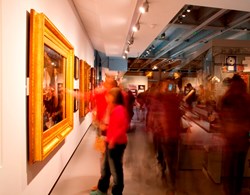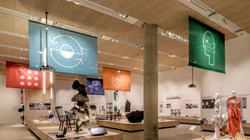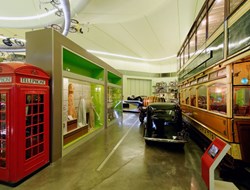Learning From Best Practice
Posted: 5 September 2018

Learning From Best Practice
Posted: 5 September 2018



Sylvania looks at how lighting in other sectors can benefit retail environments
We are often encouraged to broaden our horizons in our personal and professional lives, learning new skills and being open to approaches that may differ from our usual way of doing things. The same can be said of lighting, particularly within a retail context. Display is a key part of retail success and how goods are presented, including how they are lighted, will influence how well they sell. Looking to other industries where display is also a critical success factor can be a good opportunity for retailers to source new techniques and to try out different approaches.
Well thought out, high quality lighting is intrinsic to displays in museums and galleries where valuable historical pieces and precious artworks must be showcased for maximum impact. These private and public spaces may not be ‘selling’, but they must still deliver a fulfilling experience that satisfies the individual’s expectation. Lighting is a key part of this equation, used to guide emotions, communicate drama and enhance temporary and permanent exhibition spaces. The same principles can be applied to create a more enjoyable in-store retail experience.

Our experience of supplying lighting to London’s iconic Design Museum, for example, showed the importance of designing lighting to complement existing architecture, both internal and external. Zonal differentiation is important as it allows lighting to be aligned to specific areas for ease of navigation. At the same time this must be balanced with the need to create a consistent and seamless customer experience across the whole environment. The same is true of retail.
Of course trends change and any project - whether retrofit, refurbishment or new build - must take into account future-proofing when designing and specifying lighting requirements. Flexible systems should be incorporated that make it easy to update the look and feel of a space, through re-angling or colour changing for example, rather than upgrading or having to rip-and-replace.

Involvement in the lighting schematic for the Glasgow Riverside Transport Museum, Zaha Hadid’s first public building to open in the UK, also provides some interesting parallels. Irreplaceable historic items must be protected from damage whilst also being clearly illuminated. Low UV emitting LEDs help protect against light exposure while spotlighting draws the eye to illuminate, while minimising glare from protective casings. Similarly, colour temperature and rendering are very important in retail to protect fabrics from fading and degrading – a beautiful piece of clothing lit by a warm halogen bulb will show signs of wear and tear, making it unsellable.
On a practical note, LEDs are often the optimal solution for retailers. Their luminaire capability and flexible range combined with lower energy consumption make them perfectly suited to most display environments
Learn about more efficient retail lighting in our new eBook, ‘A Public Display of Acumen’.


